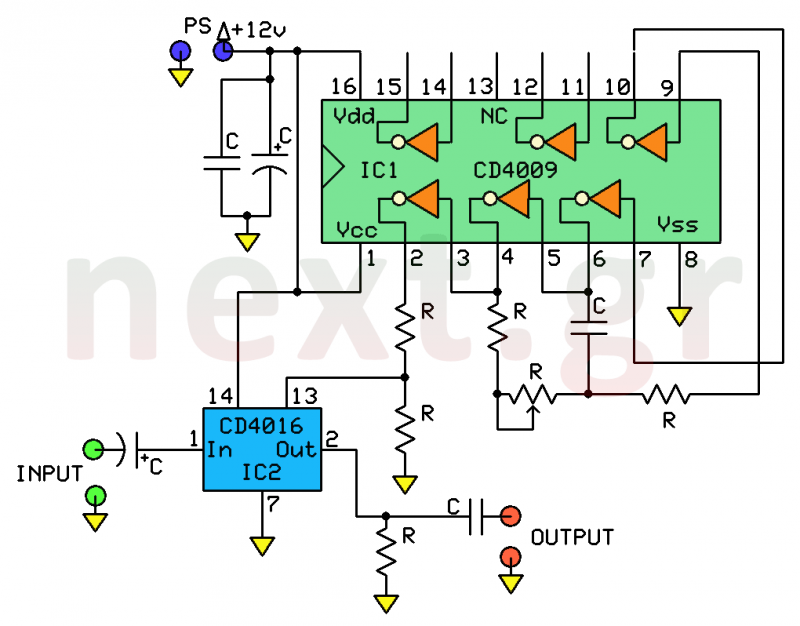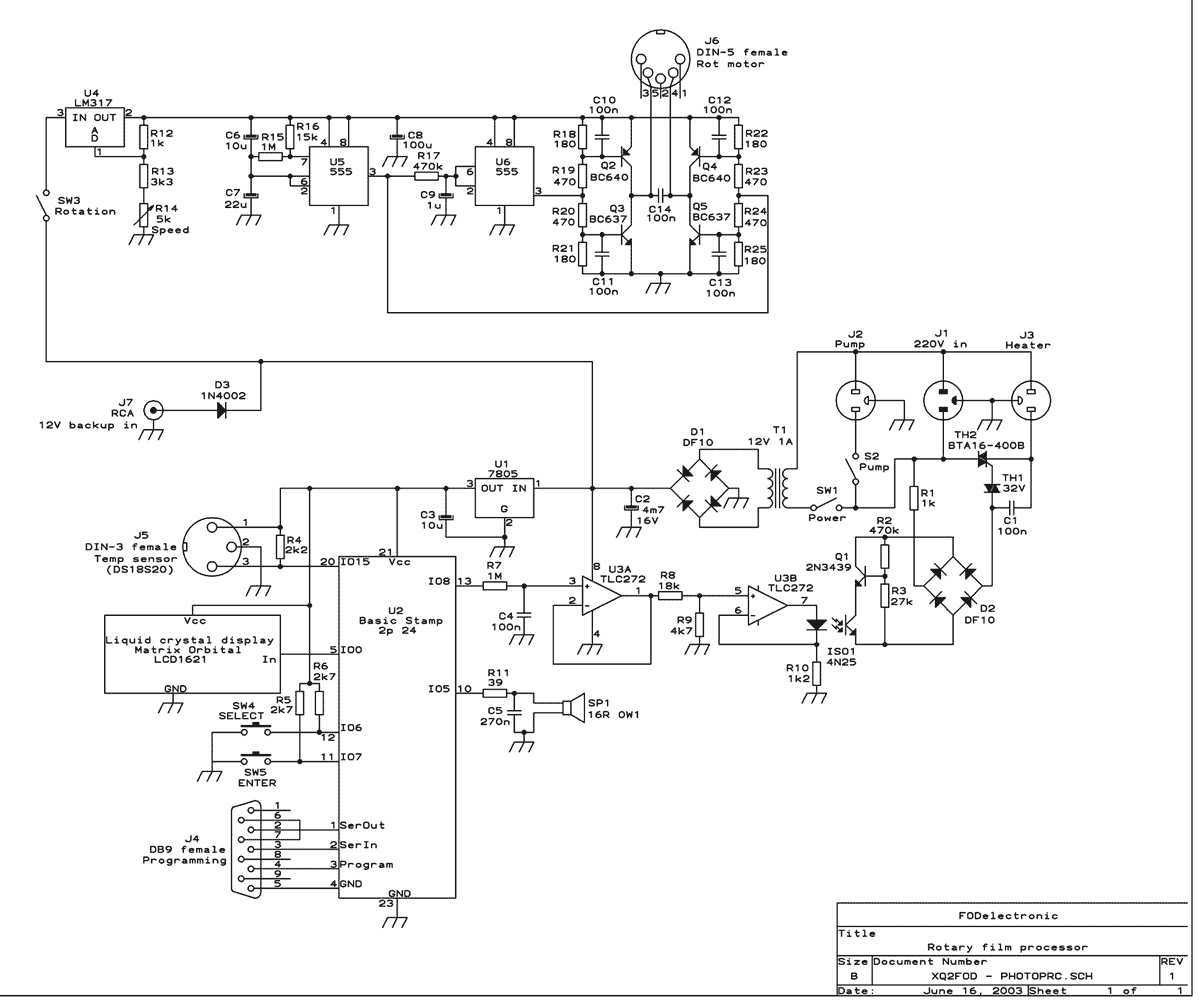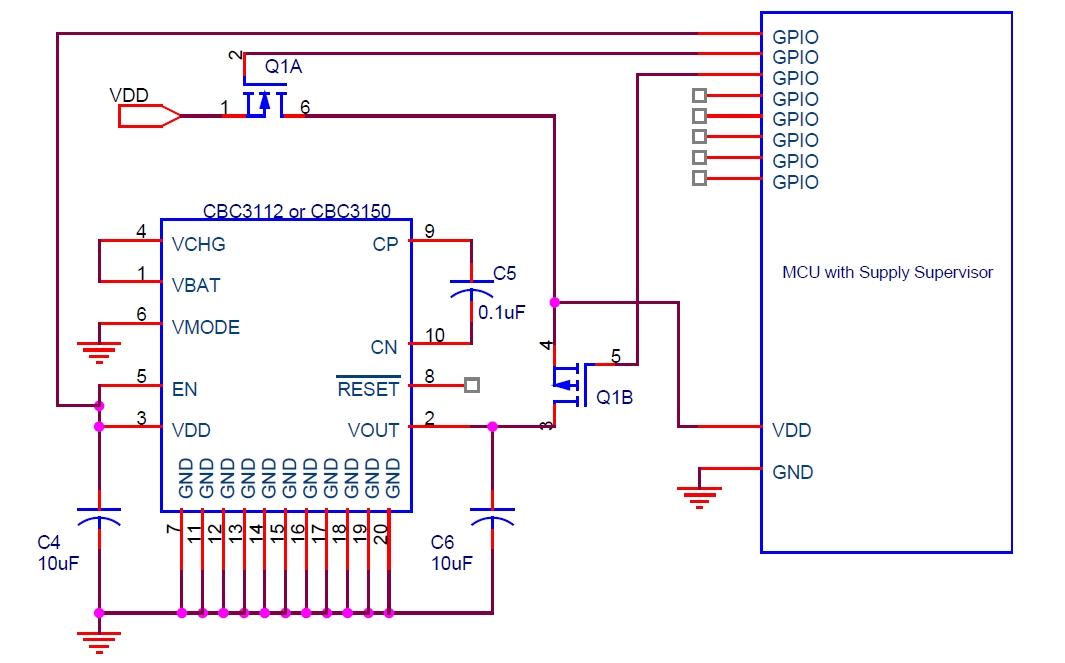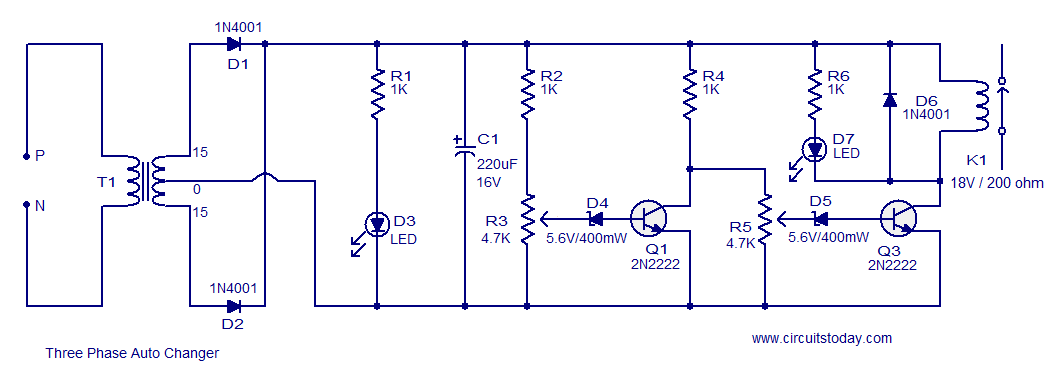
projector film changer
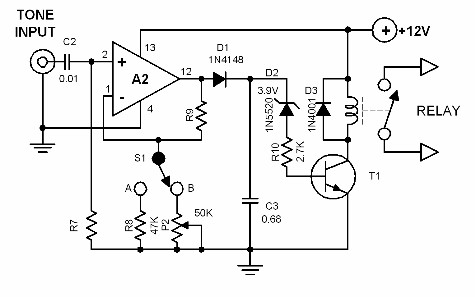
To synchronize audio with projected film, a tone code is utilized. This tone code activates a device that automatically changes the film or slide. A two-channel tape recorder is required for this process, where the normal audio program is recorded on one channel and the tone code on the other. The tone code channel is connected to a decoder circuit, which in turn connects to the remote film/slide changer terminals of the projector. During audio programming, the button S1 must be pressed each time a film or slide change is desired, allowing the tone code to be recorded onto the tape. Upon playback, the film changes automatically in response to the tone code. The second circuit, known as the tone decoder, features relay contacts connected to the remote terminals of the slide projector. The specific connections depend on the projector's design, which may be normally open or normally closed, as detailed in the projector's handbook. By correctly programming the tone, it is also possible to make the film change direction. This can be achieved by recording either a single long tone or two successive short tones, depending on the projector type.
The synchronization of audio and visual media in presentations can be effectively achieved through the use of a tone code system. The primary components involved include a two-channel tape recorder, a tone encoder, and a tone decoder. The two-channel tape recorder allows for the separation of audio content and tone codes, facilitating precise control over the film or slide transitions.
In the tone encoding process, the audio program is recorded on one channel while the tone code is captured on the second channel. The tone encoder circuit (referenced as Diagram 49.0) includes a momentary switch (S1) that must be activated each time a transition between film or slide is desired. This ensures that the corresponding tone code is recorded onto the tape, creating a reliable trigger for the decoder during playback.
The tone decoder circuit (Diagram 49.1) is crucial for interpreting the tone codes recorded on the tape. It features relay contacts that interface with the projector's remote terminals, allowing for automated control of film or slide changes. The specific wiring of these contacts must be adapted to the projector's configuration, which may vary between models. Users are advised to consult their projector's handbook to determine whether the connections should be normally open or normally closed.
Additionally, the ability to reverse the film change direction adds versatility to the system. This can be accomplished by programming the tone in a manner that the decoder recognizes either a single long tone or two short successive tones, depending on the specific capabilities of the projector in use. This flexibility enhances the presentation experience, allowing for dynamic control over visual content in synchronization with audio tracks.In synchronizing the audio and the projected film, a tone code must be used. This tone code triggers a device which automatically changes the film or slide. To do this you need a two channel tape recorder. The normal audio program must be recorded in one channel and the tone code must be recorded in the other channel. The tone code channel is then connected to a decoder circuit. The decoder circuit in turn is connected to the remote film/slide changer terminals of the projector. Diagram 49. 0 is the tone encoder. During audio programming. The button S1 must be pressed everytime one wishes to change the film/slide so that the tone code will be recorded into the tape.
During replay, the film changes automatically being triggered by this tone code. The second circuit (diagram 49. 1) is the tone decoder. The relay contacts are connected to the remote terminals of the slide projector. The actual connections depend on the design of the projector ( it can be normally open or normally closed - check your projector`s handbook). By correct programming of the tone, one can also make the film change in the reverse direction. Depending on the type of projector, it is done by either recording a single long tone or two successive short tones.
🔗 External reference
The synchronization of audio and visual media in presentations can be effectively achieved through the use of a tone code system. The primary components involved include a two-channel tape recorder, a tone encoder, and a tone decoder. The two-channel tape recorder allows for the separation of audio content and tone codes, facilitating precise control over the film or slide transitions.
In the tone encoding process, the audio program is recorded on one channel while the tone code is captured on the second channel. The tone encoder circuit (referenced as Diagram 49.0) includes a momentary switch (S1) that must be activated each time a transition between film or slide is desired. This ensures that the corresponding tone code is recorded onto the tape, creating a reliable trigger for the decoder during playback.
The tone decoder circuit (Diagram 49.1) is crucial for interpreting the tone codes recorded on the tape. It features relay contacts that interface with the projector's remote terminals, allowing for automated control of film or slide changes. The specific wiring of these contacts must be adapted to the projector's configuration, which may vary between models. Users are advised to consult their projector's handbook to determine whether the connections should be normally open or normally closed.
Additionally, the ability to reverse the film change direction adds versatility to the system. This can be accomplished by programming the tone in a manner that the decoder recognizes either a single long tone or two short successive tones, depending on the specific capabilities of the projector in use. This flexibility enhances the presentation experience, allowing for dynamic control over visual content in synchronization with audio tracks.In synchronizing the audio and the projected film, a tone code must be used. This tone code triggers a device which automatically changes the film or slide. To do this you need a two channel tape recorder. The normal audio program must be recorded in one channel and the tone code must be recorded in the other channel. The tone code channel is then connected to a decoder circuit. The decoder circuit in turn is connected to the remote film/slide changer terminals of the projector. Diagram 49. 0 is the tone encoder. During audio programming. The button S1 must be pressed everytime one wishes to change the film/slide so that the tone code will be recorded into the tape.
During replay, the film changes automatically being triggered by this tone code. The second circuit (diagram 49. 1) is the tone decoder. The relay contacts are connected to the remote terminals of the slide projector. The actual connections depend on the design of the projector ( it can be normally open or normally closed - check your projector`s handbook). By correct programming of the tone, one can also make the film change in the reverse direction. Depending on the type of projector, it is done by either recording a single long tone or two successive short tones.
🔗 External reference

